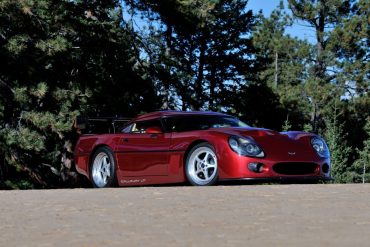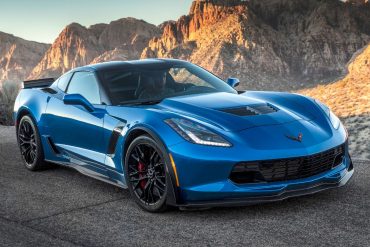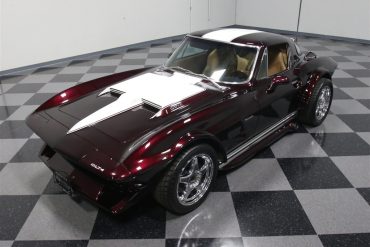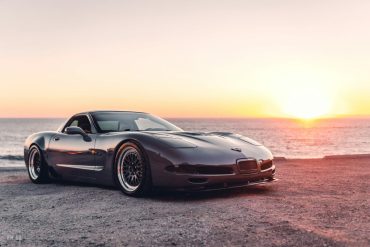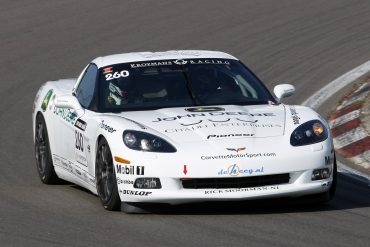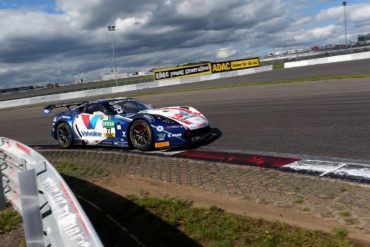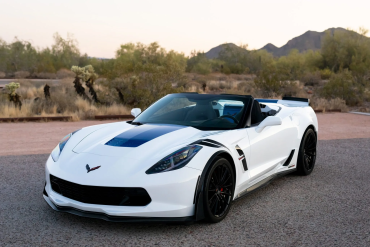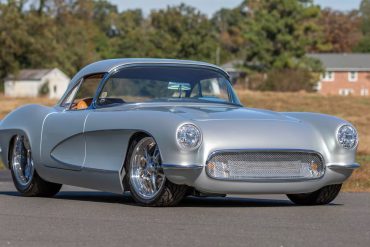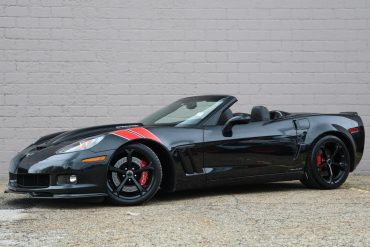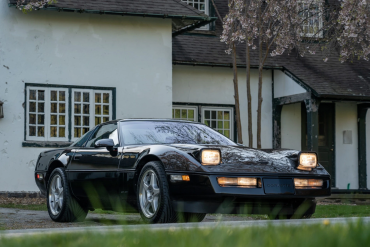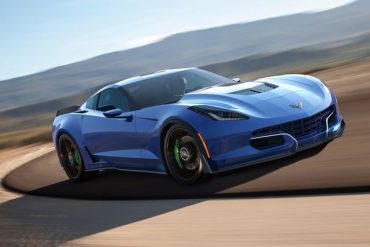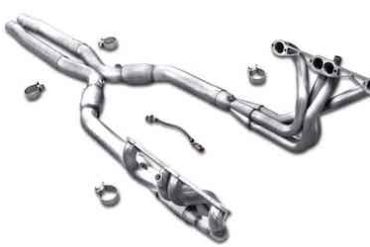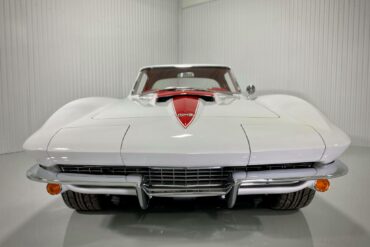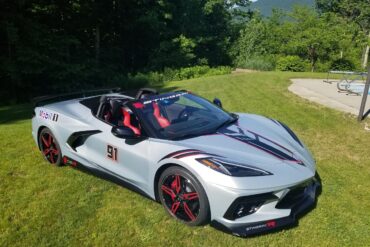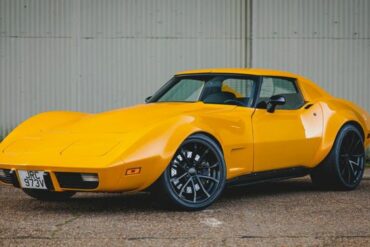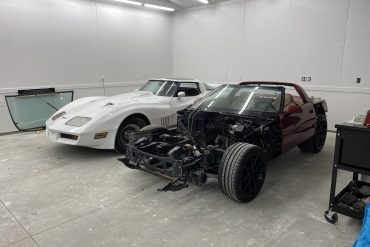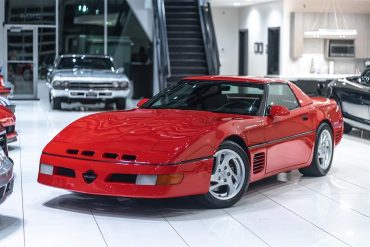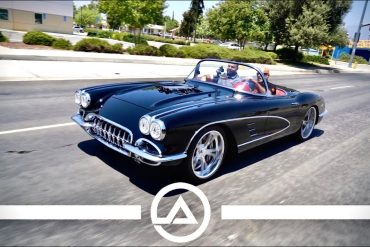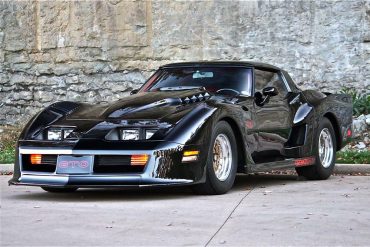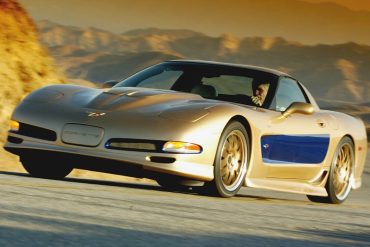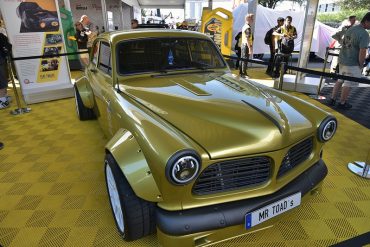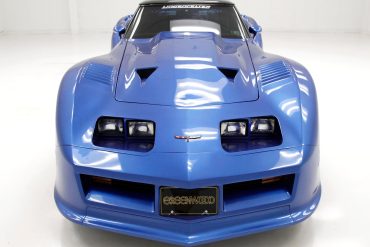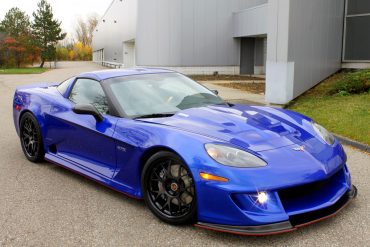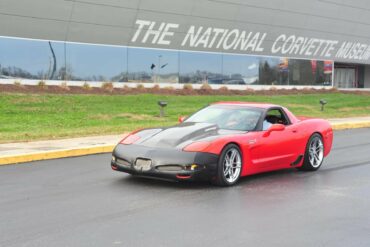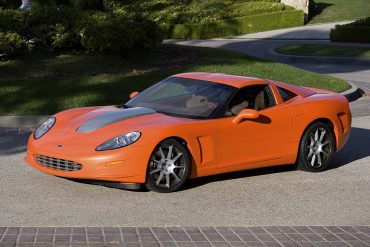The offspring of collaboration between Corvette performance guru Reeves Callaway and designer Paul Deutschman, the Super Speedster LM is an astonishing step up on the original Speedster, taking full advantage of the ZR1’s Lotus-engineered, all-aluminum DOHC engine and 6-speed manual transmission. One of only three twin turbocharged and intercooled LT5 engines built by Callaway, it delivers a pavement-shredding 766 HP.
The 25th Anniversary Edition is a hardened up version of Callaway's Corvette SC757, which in turn is based on a C7-generation Corvette Z06. It features a supercharged V8 that pumps out 757-horsepower and 777 pound-feet of torque. The supercharger is a GenThree Callaway unit with the company's TripleCooled intercooler system. A high-flow intake system feeds that beast. Callaway's Level Two HD Cooling System also helps it avoid the overheating issues that plagued C7 Z06s.
From the earliest days of the C7 Corvette’s development, GM made it clear that they intended to turn out a...
1966 Corvette Resto-Mod – More Than Meets the Eye! So you’re looking for a classic Corvette with the performance and...
Upon its release in late 1996, the C5 became an instant favorite of Corvette enthusiasts and critics alike. The fifth-generation...
Today as we continue our Facebook For Sale Feature, (where I showcase ‘Vettes that are unique and special), I’d like...
General Motors introduced the 2008 Corvette C6 GT4 that they used to compete in that year’s FIA GT4 Championship. The...
German Driver Daniel Keilwitz to Pilot Callaway Corvette at Pirelli World Challenge The 2018 Pirelli World Challenge, North America’s top...
Hennessey offers the HPE750 upgrade package for the C7 Corvette Grand Sport, which includes several performance-enhancing components. These upgrades consist...
This custom 1962 Chevrolet Corvette was built by American Street Rods in Gainesville, Virginia and represents an exceptional custom build...
Introduced in 2005, the C6 Corvette continued the advancements of the C5 and offered special editions like the ZR1, Z06,...
When it was released, the ZR-1 was a costly option that would transform conventional Corvettes into a sports car that...
Genovation Cars unveiled an electric Corvette with more power under its hood than a Dodge Challenger Hellcat. They call their car the Genovation GXE, and it is an EV (electric vehicle) variant of the seventh-generation Corvette. The company decided that they would replace the factory LT1 engine found in all base-model C7 Corvettes with a pair of electric motors that, when working in conjunction with each other, provide over 800 horsepower and 700 pound-feet of torque.
These are the top full exhausts for 1984-1996 Corvettes. The installation of a custom exhaust provides a great way to...
The excitement surrounding the upcoming 2025 ZR1 never ends, and as the 7.25.2024 reveal date looms, one Texas tuner has...
There are those that restore cars as close as possible to original condition, which is and of itself a noble...
When it was first revealed, it is well known that the Corvette C8’s styling was a radical departure from previous...
FOR SALE: A Stunning 1976 Corvette Restomod One of the biggest criticisms repeatedly slung at mid-seventies Corvette is this: they...
This is the first installment of a multi-week series where I will be highlighting unique and awesome Corvette builds from...
Chevrolet's introduction of the LT1 in 1992 as the base engine in the Corvette phased out the L98 based Callaway Twin Turbo. Previously, Callaway Corvettes made their increased power through positive manifold pressure; now they made it through increased displacement and finesse. Initially called the CL1 or CR1, they designated the chassis they were built upon. They were based on the pushrod LT1 cars (CL1) or the 32 valve DOHC LT5 ZR-1 cars (CR1).
In the realm of automotive restoration, few names evoke the same level of admiration and respect as Gabe’s Custom Interiors...
The major differences between the 1980 and 1982 Daytona and the 1981 GTO are the hood, the tops of the rear fenders, and the rear spoiler/bumper cover. The Daytona had an elaborate, short vertical fin on top of the rear fender that turned several turns “in and back,” flowing to the wide, long, table-like rear spoiler. The GTO’s rear fenders pontoons are the same as.
In 2003 Dick produced his version of a 50th Anniversary Corvette. Dick’s 50th Anniversary Corvette was bright gold with blue accents. And of course a “special” Corvette should be the toughest available version, which in 2003 was the Z06. And to top it all off, the Z06’s LS6 was opened up to the magical “426 CID.” The GS80 came out in 1986 that was more or less a Showroom Stock-prepared black beauty with very trendy lace wheels.
Summer is one of the best times of the year. The weather’s great. Gals are dressed up like it’s bikini...
..As the Volvette V06! Watch out Corvette Fanatics…Something “Wicked” This Way Comes! In the tradition of Halloween, we bring you...
What you see before you is a 1982 Chevrolet Corvette that has been fitted with a rare Greenwood Daytona body kit. The most extreme of the Greenwood brothers' kits, the Daytona body kit is a highly sought-after modification that was developed by race-winning specialists Burt and John Greenwood.
Based on the Corvette Z06, this new GTR also represents a collaboration between Specter Werkes and Lingenfelter Performance Engineering, with a Lingenfelter twin-turbo system powering the car – and pumping its 7.0-liter LS7 engine to 800 horsepower. Featuring dramatic bodywork and carbon fiber details, the GTR blends racing-inspired design cues with uncompromising luxury and performance.
Mallett Performance Has Created Some Truly Remarkable Corvettes (and other vehicles too!) If you are familiar with Corvettes, then it...
The Callaway C16 was Callaway’s 16th major automotive project. It was a limited production, bespoke automobile, built to order, by what the Press called “the best specialist engineers in the business”. These cars are seriously fast, beautiful, and exclusive. The C16 was a direct competitor for the Porsche GT3, the Lamborghini Murcielago, the Ferrari 599 GTB. It was both faster and more capable than its competitors, at less cost.
No surprise that the C8 Corvette caught the team’s attention at Hennessey. It is, after all, one of the greatest...


